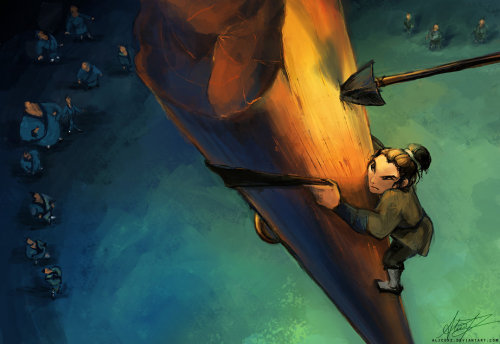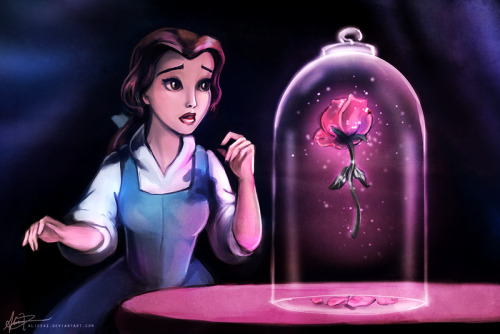The Teachings Of Henry Highland Garnet Vs. Fredrick Douglass
The teachings of Henry Highland Garnet vs. Fredrick Douglass
Henry Highland Garnet didn’t come up with the best ideas to counteract slavery and resistance against it, as his ideas were mixed with violence that critics like Fredric Douglass opposed for fear that it would ignite rebellions across the states that African-Americans could not win or face bloody white backlashes. But, something that black leaders like Douglass didn’t understand is that the demand for equal rights by appeasing the dominant elitist through morality, will simply not work. A great black activist during this time, Martin DeLaney explains that appeasing the dominant society through morality and common decency will not work because you cannot force your morals, no matter how right they are on a people, group, or individual who are unwilling to listen or hear. In other words, it isn’t morality that holds the reins, it is power, and that is true no matter what century we’re discussing.

First, we should get to know who Henry Highland Garnet was ‘‘born a slave on December 23, 1815, in New Market, Kent County, Maryland, and escaped with his family in 1824, was the grandson of a captured Mandingo chief. Garnet’s early education was in a segregated school on Mulberry Street in Manhattan. In 1835, he was in attendance at the Canaan Academy, a New Hampshire School, that was destroyed by a racist mob. Garnet, like other abolitionists during the 1840s, was critical in his assessment of the various emigrationist programs. That process, however, was an evolutionary one.’’

One of his best quotes, ‘‘Neither God nor angels or just men, command you to suffer for a single moment. Therefore it is your solemn and imperative duty to use every means, both moral, intellectual, and physical that promises success….(in Woodon 1925, 1969), one of his most radical statements in regards to slavery. The speech, the earliest extant speech by a black man advocating violence in America, entitled ‘An Address to the Slaves of the United States, was delivered before the National Convention of Colored Citizens at Buffalo, New York, in 1862. Despite its significance of the speech and the speaker, Henry Highland Garnet is virtually unknown to students of American history’’. Garnet truly believed that the only way for slaves to gain their freedom from slave owners was to take it by force, by any means necessary, and Fredrick Douglass fiercely opposed such views, as he wanted to have all slaves be freed through non-violence and appealing to people’s sense of morality. The two went back and forth, Douglass wrote that educated men who followed Garnet’s ‘backwatered and destructive’ stance had no stomach for continuing the struggle against prejudice and ignorance in this country, and thus it was that they sought more congenial places so they could live 'peaceful lives'.

Nevertheless, Garnet inspired his people when it seemed like all was lost, a talent of his, as his voice was awe-inspiring, and people who were tired of being crushed under the weight of oppression who didn’t think non-violence was going to work, flocked to him during his weekly sermons. ‘‘There was something about his personality which few leaders possessed—the commanding presence which inspires courage and the will to fight through difficulties. In his personality were reflected the fire to genius of African chieftains who had defied the slave catchers and later rankled Southern bondage.’’

More Posts from Arieso226 and Others
Tyre Nichol’s mother has set up a memorial fund to help pay for mental health services for his family and a memorial skate park in his name. If you cannot donate, please share.

The Creation and Origin story of Gargoyles!
There are stony creatures that you see on the top or sides of great architectural buildings and churches in Europe. There are stone-carved grotesques with spout designs to convey water from a roof and away from the side of the building to prevent water from running down masonry walls and eroding the mortar between. Architects often used multiple gargoyles on buildings to divide the flow of rainwater off the roof to minimize the potential damage from a rainstorm.

NO. 2
Despite their frightening appearances, Gargoyles are, according to the French legend mounted on the walls of a newly built church to scare off evil spirits and used for protection. Due to this, churches, which were considered holy places, often had these creatures on the roof to ward off the devil and demons. They are also suitable as guardians, as they have a high defense from their stony skin making them difficult to wound. The legend involves St. Romanus the former chancellor of the Merovingian king Clotaire II who was made bishop of Rouen, and how he saved the country around Rouen from a sinister monster called Gargouille, a typical dragon with bat-like wings, a long neck, and the ability to breathe fire from its mouth. Multiple versions of the story are given, either that St. Romanus subdued the creature with a crucifix, or he captured the creature with the help of the only volunteer, a condemned man. In each, the monster is led back to Rouen and burned, but its head and neck would not burn due to being tempered by its own fire breath. The head was then mounted on the walls of the newly built church to scare off evil spirits, and used for protection.

NO. 3
They were useful and designed by artists who created them by sheer necessity, carefully skilled by sharp hands, and made to improve the silhouette of the buildings. ‘‘The gargoyle is a marker in the march of civilization. It was a great thought and a distinct mark of regard for the common people when it was thought best to provide means of throwing the water from the roofs of great public buildings well away from the walls rather than to allow it to trickle down upon the passers-by. The gargoyle had its development in regard to human comfort. It is the kind of an idea that would breed revolution. The first decorative gargoyle of the middle ages was of the year 1220, and the earliest type is found at Laon, France.’’


if you start a post with "why isnt anyone talking about this" or "while yall are doing x y and z this atrocious thing happened and if u dont know about it the second it happens ur part of the problem actually" im not gonna read it until u change ur tone u know damn fucking well how news gets spread and how the media works in 2021 to be acting like everyone knows everything at every second when theyre being bombarded with news 24/7. stop guilt tripping people its fucking gross
I understand, but all of the horror in the movie was because the main character had schizophrenia, 24 personalities to be precise. Trauma does terrible things to people.
isn't it insane though how schizophrenic people are viewed as violent and dangerous by the majority of society when in reality schizophrenic people are nearly 14 times more likely to be on the receiving end of violence than to be the perpetrators...
The tale of Lilith
There are a lot of accounts about the ‘demon-ness Lilith’, and her origin story leads a lot to be desired. Apparently, she was the first wife of Adam in Sumerian folklore, and because she did not want to be under Adam’s control any longer, and became, depending on which account you read, a vampire, a demon-ess, or a harlot, or all three, for not wanting to be apart of ‘God’s plan.’ The Sumerian accounts, taken from the 3rd millennium, were the first accounts of what happened to her before the biblical Hebrews surmised of her.

She is described as a ‘beautiful maiden’ but was believed to be a harlot, who once took a lover, offered no satisfaction to him, nor would she ever let him go. According to the Sumerian epic, dating from around 2000 B.C, ‘Gilgamesh and the Huluppu Tree’ and was ‘‘believed to appear to have human eyes. She is slender, well-shaped, beautiful, and nude, with wings, and owl feet. She stands erect on two reclining lions which are turned away from each other and are flanked by owls. On her head, she wears a cap embellished by several pairs of horns. In her hand, she holds a ring-and-rod combination. Evidently, this is no longer a lowly she-demon, but a goddess who tames wild beasts, and as shown by the owls on the reliefs, rules by night.’’

Apparently, the earliest mention of the ‘she-demon, whose name is similar to that of Lilith is found in the Sumerian king list which dates from around 2400 B.C. ‘‘It states, that the father of the great Gilgamesh was a Lilu-demon. The Lilu was one of four demons belonging to an incubi-succubae class. The other three were Lilitu (Lilith), a she-demon; Ardat Lili, or her handmaiden, who visited men in the night and bore them ghostly children. There is also the tale of the Irdu Lili, who was her male counterpart and would visit women and beget children by them. Originally these were storm demons, but because of a mistaken etymology, they came to be regarded as night demons. On one brief reference to Lilith in the Bible, Isaiah 34:14, in describing Yahweh’s (God) day of vengeance, says: The wild cat shall meet with the jackals, And the satyr shall cry to to his fellow, Yea, Lilith shall repose there, And find her a place of rest.’’


tumblr is not instagram. likes on tumblr, while appreciated, are effectively useless in helping a creator reach a wider audience.
when you like something, it goes into your own personal folder. and chances are good that, even if it’s public, no one will see it.
likes do not get shared to the dashboard, where others can actually see and have the opportunity to engage.
liking a creation only really benefits you, and not the creator or the rest of the tumblr community!
likes are great for bookmarking, saving posts with the intent of a later reblog, engaging with certain posts that don’t need to be shared (ie. personal posts), posts that you are not comfortable sharing, and prepping a queue.
REBLOGGING is the best way to support a content creator!
reblogs boost attention and engagement. it actually allows for that content to be shared with others. which, really, is what tumblr is all about!
tldr; reblogs > likes. please don’t take content creators for granted. this site would be nothing without them!


Vogue Arabia
I like Mulan better







The Abuse of Police Power
Occurrences on the news shows police brutality almost every day; just recently, Dereck Chavin, the cop who murdered George Floyd was charged with murder, and though that was a serious win, at the same time Makiyah Bryant was killed by the Columbus Police Department. The system has and always will be a discriminatory one based on race and class, and unless there’s real.

The first documented and filmed case of abuse of police power was the beating and death of Rodney King; then in 2014 the death of Micheal Brown in Ferguson, Missouri. Normally, the Bill of Rights is supposed to protect your rights from normally being harassed from a task or police force, like the fourth amendment, which involves the right against unreasonable searches and seizures, which means the Constitution declares a person has the right to be secure in their homes and in their persons against unreasonable searches and seizures. A person has the right against arrest without probable cause and the right to due process of law. Not every police member is a racist, but every police member is a part of a racist and oppressive system.

Forty years ago, the Bill of Rights used to protect every citizen from brutality, wasn’t taken as seriously as it is today in court justice proceedings around the country, most likely because modern technology hadn’t progressed as it has now, where if you hear any word of police assaulting a citizen, you can be sure it will be filmed. ‘’Police operations during that period were often far more informal than they are today, and investigating officers frequently assumed that they could come and go as they pleased, even to the extent of invading someone’s home without a search warrant. Interrogations could quickly turn violent, and the infamous “rubber hose,” which was reputed to leave few marks on the body, was probably more widely used during the questioning of suspects than many would like to believe. Similarly, ‘doing things by the book’ could mean the use of thick telephone books for beating suspects, since the books spread out the force of blows and left few visible bruises.’’
Every branch of the government, including the legislative, judicial, and presidential branches of the government is supposed to be held accountable by the other branches. The system was designed to ensure that no other individual or agency can become powerful enough to take away the rights and many freedoms guaranteed under the Constitution but without that accountability, a police agency can have absolute power based more on political considerations and personal vendettas than objective considerations on guilt or innocence. The court systems would become the area for resolution, not just between citizens and the agencies of government. After handling by the justice system, individuals who feel that they have not received respect and dignity under the law can appeal to the courts for correction. Those appeals can be based on procedural issues and are independent of more narrow considerations of guilt and innocence. In the case of search and seizure, there have been many court cases that involve illegally searches and seizure, which is any evidence seized without regard to the principles of due process as described by the Bill of Rights, particularly the fourth amendment, which says, ‘the rights of the people to be secure in their persons, houses, papers, and effects, against unreasonable searches and seizures, shall not be violated, and no warrants shall issue, but upon probable cause, supported by oath or affirmation, and particularly describing the place to be searched, and the individuals or things to be seized’; most illegally seized evidence is the result of police searches.’

The Fourth Amendment, a part of the Bill of Rights, was adopted by Congress and became effective on December 15, 1791. The first case concerning search and seizure was that of Weeks. U.S (1914), whose case was upturned because federal agents found the right man, suspected of breaking a federal crime by using the U.S mail to sell lottery tickets, but unfortunately the case was overturned because those federal agents conducted a home search without a warrant; nevermind that they found incriminating evidence. Which means that Weeks, whom federal agents could have proved to a federal/Supreme Court that he was guilty, was set free because the police were also guilty. The Weeks case forms the basis of what is now called the exclusionary rule, which holds that evidence illegally seized by the police cannot be used in a trial. The rule acts as a control over police behavior and specifically focuses on the failure of officers to obtain warrants authorizing them either to conduct searches or to effect arrests, especially where arrest may lead to the acquisition of incriminating statements or to the seizure of physical evidence. The decision of the Supreme Court in the Weeks case was binding, at the time, only on federal officers because only federal agents were involved in the illegal seizure.

There are exceptions to the exclusionary rule, of course, like the exception of the fleeting target that permits law enforcement officers to search a motor vehicle based on probable cause but without a warrant, and is predicated on the fact that vehicles can quickly leave the jurisdiction of a law enforcement agency. Any search and seizure that was illegally obtained or violated due process will be seen as ‘tainted evidence’. The Silverthorne Lumber case (1920) created a new legal principle that excludes from introduction at trial and any evidence later developed as a result of an illegal search is called the fruit of the poisonous tree. When an emergency search is needed, it is justified for the police on the basis of some immediate and overriding need, such as public safety, the likely escape of a dangerous suspect, or the removal or destruction of evidence. Several cases improved the light on this, like Maryland vs. Buie (1990), which extended the authority of police to search locations in a house where a potentially dangerous person could hide while an arrest warrant is being served. Searches like this can save lives by disarming felons or by uncovering medical reasons for an emergency situation; they may also prevent suspects from escaping or destroying evidence. Emergency searches can fall under the exception to the warrant requirement of the Fourth Amendment. The Legal Counsel of Division of the FBI provides the guidelines, after the 1979 case of Arkansas v. Sanders, where the Supreme Court had ruled, ‘‘where the societal costs of obtaining a warrant, such as danger to law officers or the risks of loss or destruction of evidence, outweigh the reasons for prior recourse to a neutral magistrate.’ The guidelines and conditions apply that 1.) There was probable cause at the time of the search to believe that there was evidence concealed on the person searched, 2.) there was probable cause to believe an emergency threat of destruction of evidence existed at the time of the search, 3.) the officer had no prior opportunity to obtain a warrant authorizing the search, 4.) and the action was no greater than necessary to eliminate the threat of destruction of evidence.
The Assassination of MLK!
NO. 1
Martin Luther King. Jr, the famous civil rights leader, and the clergyman was assassinated at the Lorraine Motel in Memphis, Tennessee on April 4, 1968; he was rushed to St. Joseph’s Hospital where he ‘’died’’. James Earl Ray, a fugitive who had escaped Missouri State Penitentiary was arrested in London at Heathrow Airport, extradited back to the United States, and charged with the crime, where he pleaded guilty on March 10, 1969, and sentenced to 99 years in Tennessee State Penitentiary. He made several attempts to withdraw his guilty plea and be tried by a jury but was unsuccessful. He died in prison in 1998.
The King family do not believe he was murdered at the hands of this common criminal, but that the F.B.I and C.I.A had their hands involved, especially the head of the F.B.I, director J. Edgar Hoover, the Mafia, and Memphis police, as alleged by Lloyd Jowers, the owner of Jim Grill, a restaurant near the Lorraine Motel where the civil rights leader was shot. They believed that Ray was a scapegoat. In 1999, the family filed a wrongful death lawsuit against Jowers for $10 million. During closing arguments, their attorney asked the jury to award damages of $100, to make the point that ‘it was not about the money.’ During the trial, both sides presented evidence alleging a government conspiracy. The government agencies accused could not defend themselves or respond because they were not named as defendants.
Based on the evidence, the jury concluded Jowers and others were ‘’part of a conspiracy to kill King’’ and awarded the family of $100. The allegations and the findings of the Memphis jury were later rejected by the U.S Department of Justice in 2000 due to lack of evidence. ‘’The brutal death of the civil rights leader elicited a political reaction manifest in social disturbances across the nation. Numerous riots and lesser civil disturbances occurred as a direct aftermath of the killing. Several explanations for the disturbances appear obvious. The best--known civil rights leader in the nation had been murdered. For many, King had become a symbol of progressive change in policies concerning race relations and poverty. The killing also occurred within the context of increased interracial tension. More widespread rioting, looting, and burning--although less personal violence--took place in the prior summer than at any other time since the Civil War. Finally, diverse modes of political participation among African-Americans had emerged on a fairly massive scale. [I] argue that the assassination was a stimulus that led individuals to an emotional disengagement from the realm of political behavior. What I term political disengagement occurs when normally positive and latent diffuse sentiments toward the political system and its elements become negative.’’

26-year-old Anthro-Influencer Anthropology, blogger, traveler, mythological buff! Check out my ebook on Mythology today👉🏾 https://www.ariellecanate.com/
208 posts
